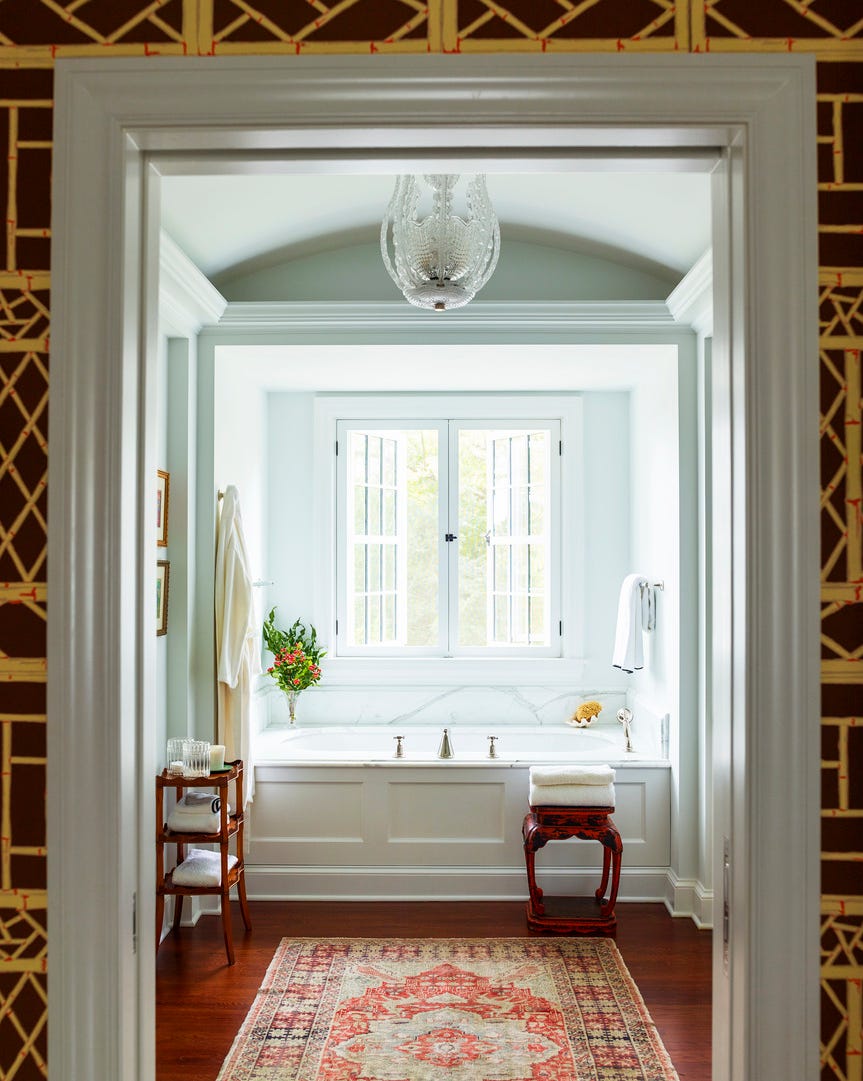
WWW.HOUSEBEAUTIFUL.COM
Why Alcove Bathtubs Are Taking Over Bathroom Design, According to Experts
Jump to:Interior design is highly intentional. Every detail of your home, from the throw pillows on your sofa to the hardware on your kitchen cabinets, is thoughtfully chosen to reflect your personal style and aesthetic. Your bathroom should be no exception. Although it’s often overlooked in the broader design process, the bathroom has the potential to shine, with even its fixtures making a statement. In particular, bathtubs can blend style and functionality seamlessly. Alcove tubs—that is, bathtubs with a skirt or surround panel—are gaining popularity for their sleek, built-in look and endless design versatility.“We’re seeing more interest in bathtubs with aprons or panels, especially from clients who value timeless design and functionality,” says Sandra Diaz-Velasco, principal architect at Eolo A&I Design, Inc. and member of the National Kitchen and Bath Association (NKBA). “Framed tubs give a sense of permanence and calm—they read as part of the architecture rather than something ‘placed’ into the room. That’s incredibly appealing to today’s design-conscious homeowners.”There’s a lot to know about this style of bathtub before you embark on a bathroom renovation. We tapped three NKBA members to offer their insight. Read on for everything you need to know about alcove bathtubs and how to incorporate this special update into your own bathroom at home. Related StoriesWhat Is an Alcove Bathtub?Eric PiaseckiA Robin Henry–designed bathroom with paneled tub apron.An alcove bathtub is a fixture that is surrounded by walls on three sides. Different from a freestanding bathtub unit or shower stall, an alcove bathtub is set into a niche in the wall. Master kitchen and bath designer and NKBA member Alena Capra says, “Typically, alcove bathtubs come in three sizes—60, 66, and 72 inches. In smaller bathrooms, this alcove tub installation can also be combined to have a shower as well.”What Is a Bathtub Apron?Jonathan BondIn this bathroom by designer Elizabeth Hay, the tub apron consists of blue wood paneling. Tour the entire home here.A bathtub apron is a type of paneling or covering installed over the alcove bathtub to cover the tub’s surface and add design appeal. Bathtub aprons can also be called skirts or surrounds, although surrounds often include a wall panel as well. “While some alcove-style tubs can have integral aprons on the front of the tub, another option is to order a drop-in style tub that fits in the space,” says Capra. “Then, the front of the tub can be framed out and covered with tiles or paneled with other materials to give a more ‘built-in’ and elevated look.”Can You Add an Apron to Any Kind of Bathtub?According to Diaz-Velasco, technically yes, but it’s best to ensure the bathtub you have is actually meant to be built-in. “Not all tubs are designed to be enclosed—so the structure and shape matter,” she explains. “In a recent project, we used a built-in tub and designed custom millwork around it, integrating open towel storage, which added warmth and functionality to the base while preserving clean lines.”Related StoryWhat to Know When Adding a Tub ApronHeather TalbertA bathroom designed by Claire Stazak.Waterproofing Is Non-NegotiableAdditional waterproofing measures must be taken when adding a panel on top of your bathtub. “We ensure full waterproofing membranes are applied beneath any tile or panel application, especially on horizontal surfaces around the tub to avoid moisture compromise,” says Diaz-Velasco.There’s Less Layout FlexibilityA built-in bathtub is a commitment. If you’re looking to do additional renovations down the road, it’s important to understand that the layers and installation involved with a bathtub surround are not easily undone. Remember Plumbing AccessDiaz-Velasco notes that access panels, or small openings, must be installed with the bathtub panel so plumbers, contractors, or electricians can access the essential areas. This is especially important when repairs are required or regular maintenance is needed.How Much Does Covering a Bathtub Cost?According to The Home Depot, ready-made bathtub surrounds cost on average between $40 and $3,000. However, custom fittings will cost upward of $4,000, especially when you factor in labor costs. High-end materials like stone will also raise your prices.Related StoryWhat Can a Tub Apron Do for a Space?Haris KenjarPlaster seamlessly integrates the bathtub with the surrounding walls in this Katie Hodges–designed space.Interior designer Bethany Reilly, the founder and lead designer of BR Design Group and a NKBA member, likes alcove bathtubs for their seamless integration and design possibilities. “The benefits of this type of installation include a more aesthetically pleasing finish and easier cleaning,” she explains. “It’s also a space-saving solution because built-in tubs typically take up less room than freestanding ones. And because they’re enclosed on three sides, water is less likely to spill onto the floor, making them more bathroom-friendly.” Capra agrees. “There are not many cons to alcove bathtubs, especially if that is the look a client is going for,” she says. “There are many sizes and styles for ‘drop-in’ tubs that can be used in an alcove installation, so the options are really endless.”Follow House Beautiful on Instagram and TikTok.
0 Comments
0 Shares
21 Views


